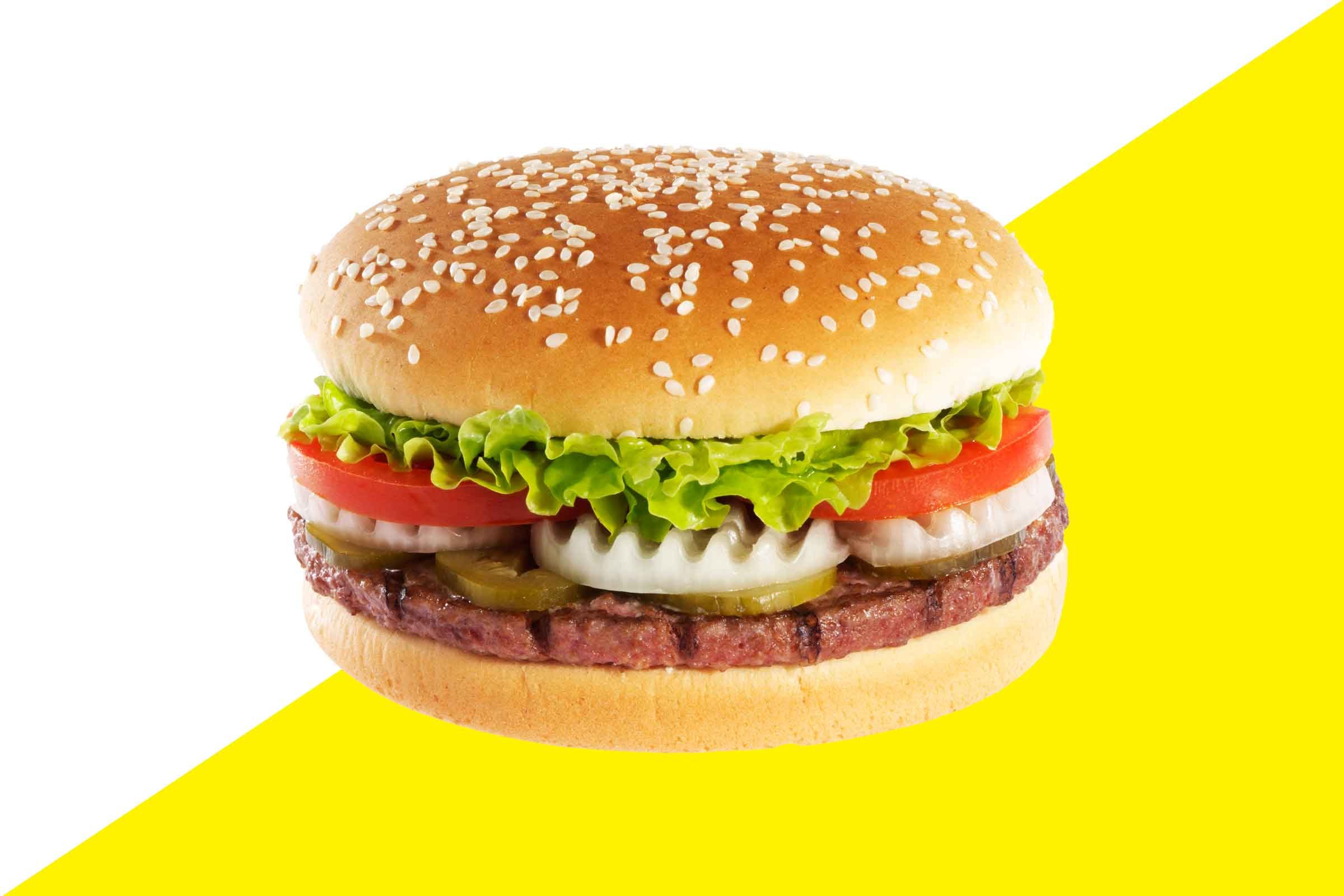
Hamburgers
A rare burger might sound juicy and delicious, but ground beef cooked below 160°F might not kill disease-spreading bacteria. You don’t need to leave your burger undercooked to get that juiciness you crave. Adding chopped mushrooms and less salt will make for a moister burger, especially if you don’t spend too much time mixing them in, says Libby Mills, MS, RDN, LDN, FAND, a spokeswoman for the Academy of Nutrition and Dietetics. “If you’re incorporating herbs or spices and overwork it, you could easily squish out air pockets,” she says. “Those little pockets will trap juices.” She also recommends searing the patty first to lock the juices in, then moving the patty to a medium heat to finish cooking. Here’s a guide to which cuts of meat are safest.
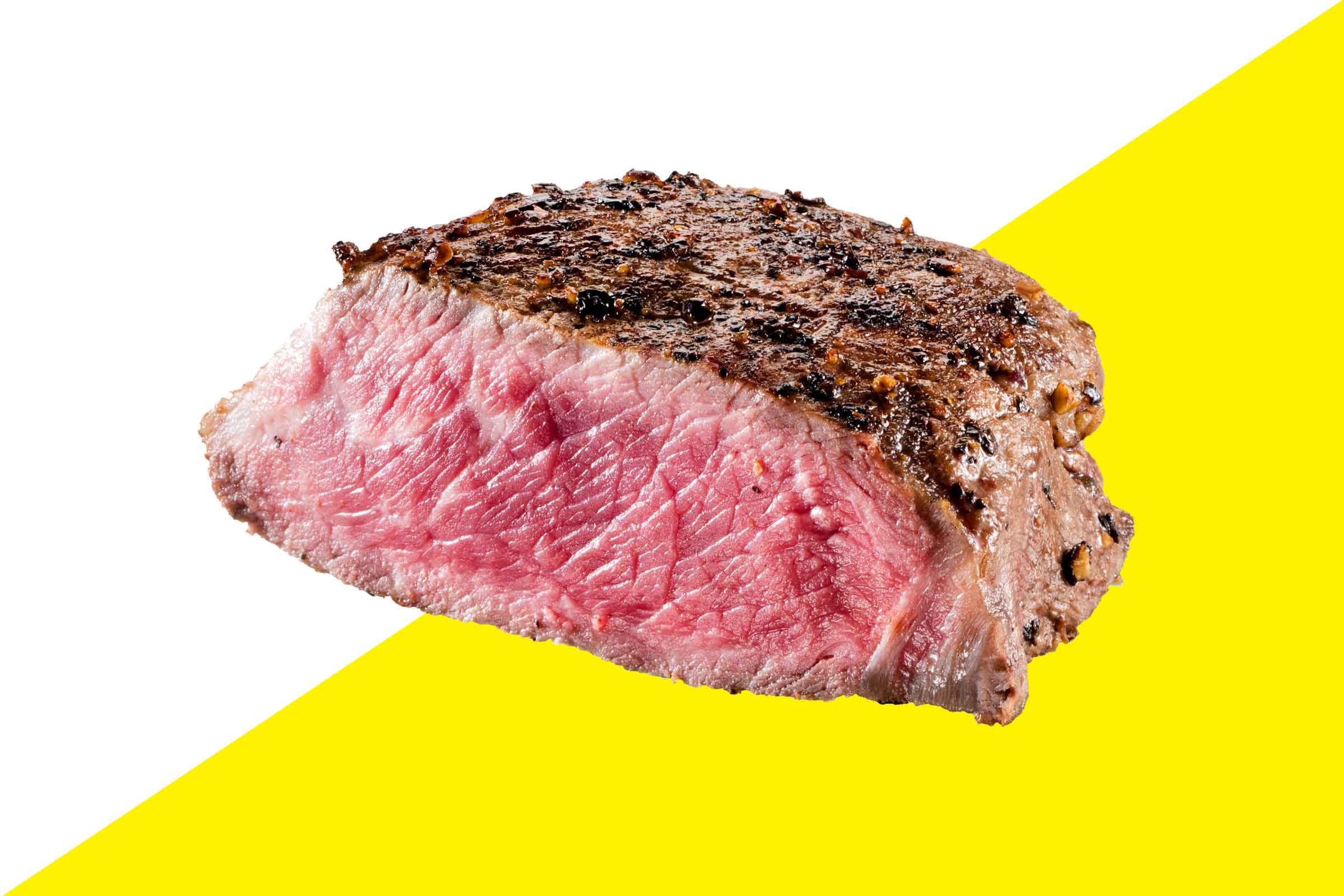
Steak
A steak that hasn’t cooked to 145°F could harbor bacteria, which is especially dangerous for young children, older adults, or anyone with a compromised immune system, says Wesley Delbridge, RD, food and nutrition director for the Chandler Unified School District Food and Nutrition Department. “For any of those three, don’t go with anything but fully cooked, well done,” he says. For a juicy cut that hasn’t been done rare, he recommends searing it, as well as marinating beforehand.
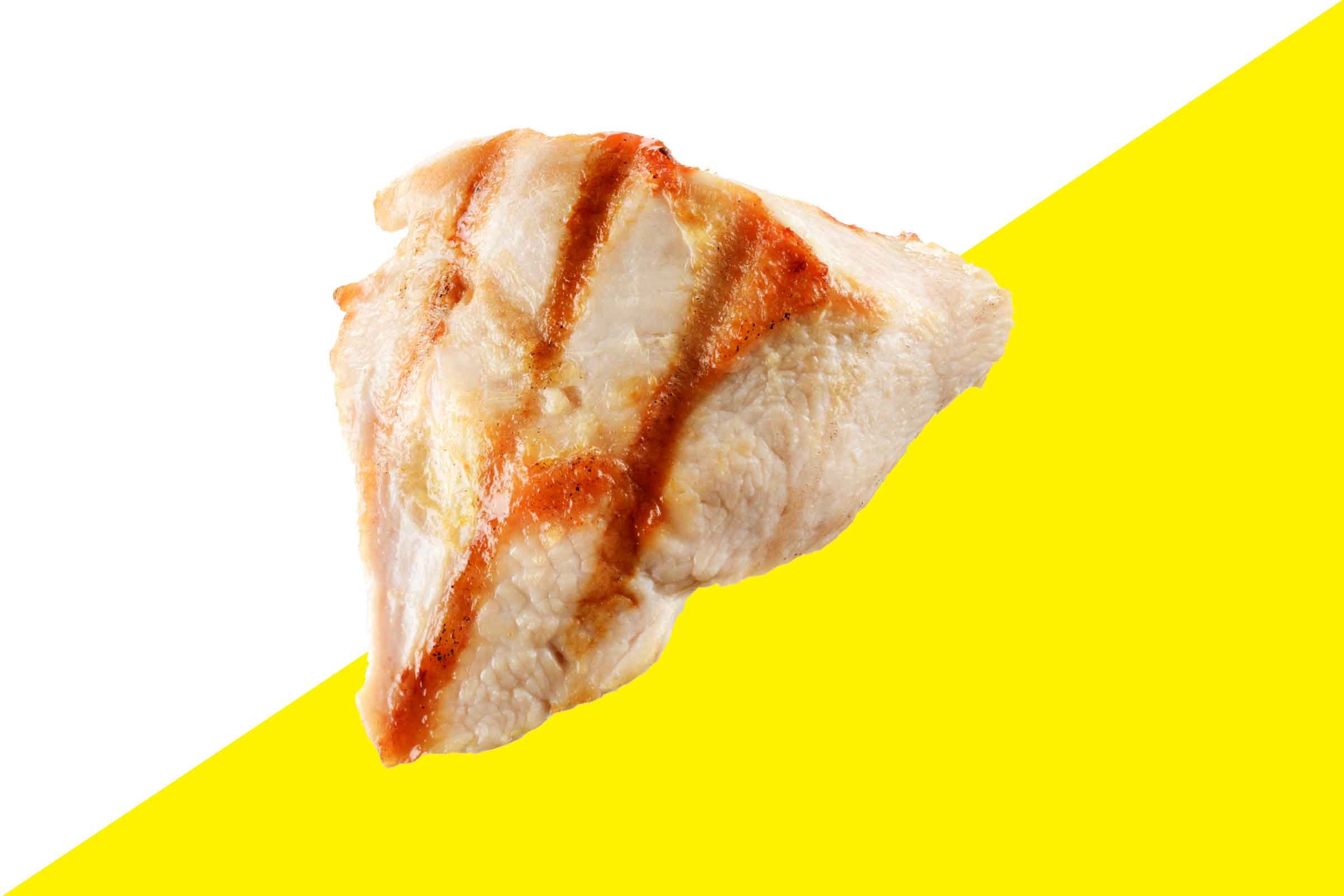
Grilled chicken
Poultry needs to reach 165°F before all the harmful bacteria are killed, says Jeff Nelken, food safety consultant. Eyeballing the color isn’t enough—to be safe, you need to use a thermometer, he says. Because chicken needs to reach a higher temp than, say, ground beef (which the FDA says only has to reach 160°F), keep them in separate areas of your grill and use a different tool for each. “If you throw on a raw chicken breast and it gets on the hamburger, there will be cross-contamination,” Nelken says. He recommends sectioning off your grill based on the type of meat, then moving fully cooked meat to a holding area of 135°F to stay warm. Even seasoned cooks can make these BBQ mistakes.
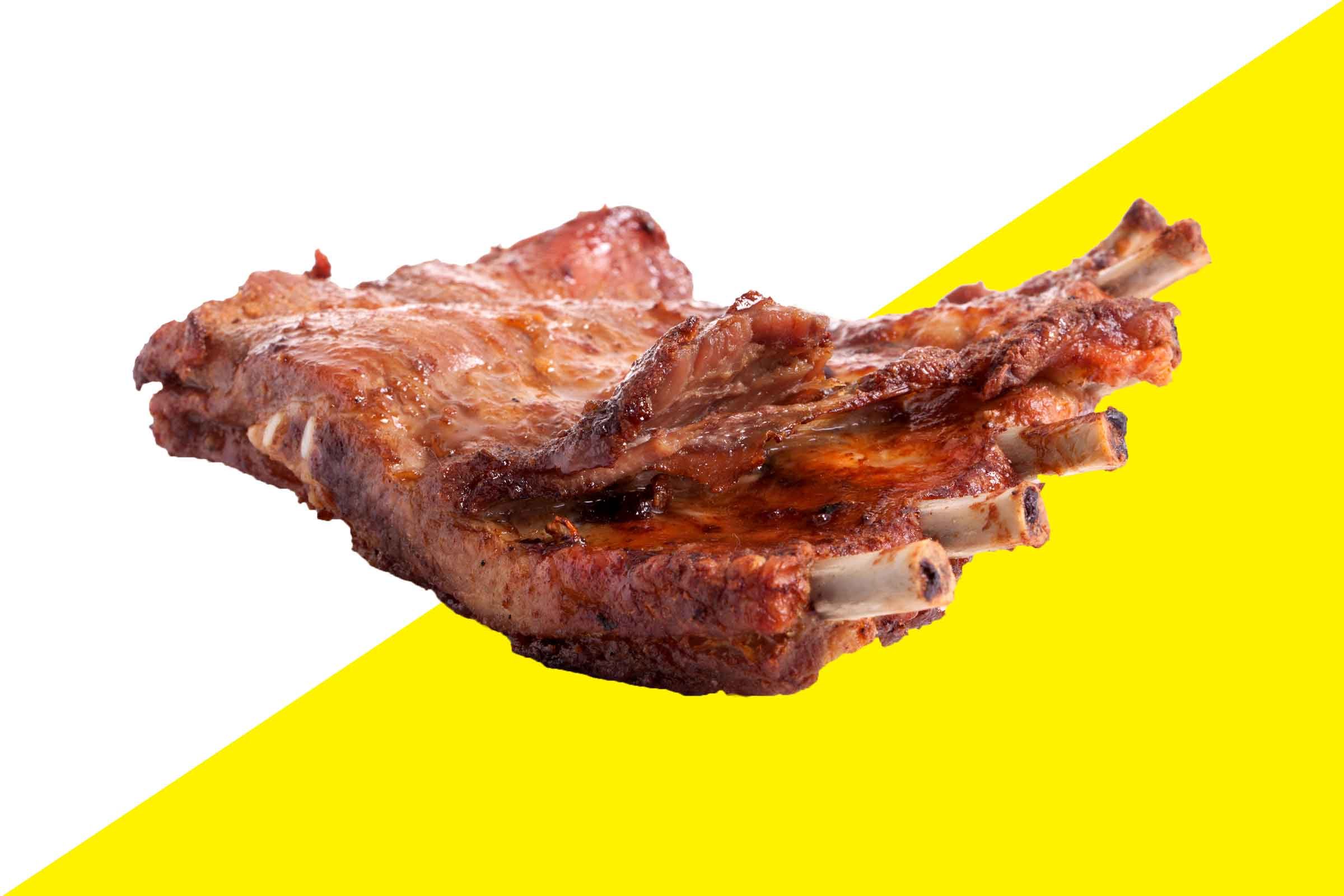
Ribs
Because the bones get in the way, it can be hard to tell if ribs have reached their minimum of 145°F. “You don’t want to put the thermometer on the bone, but on the thickest piece of meat, closest to the bone,” Dr. Mills says. “That’s the last area to get done.” For more fun barbecue ideas, check out these foods you didn’t know you could grill.
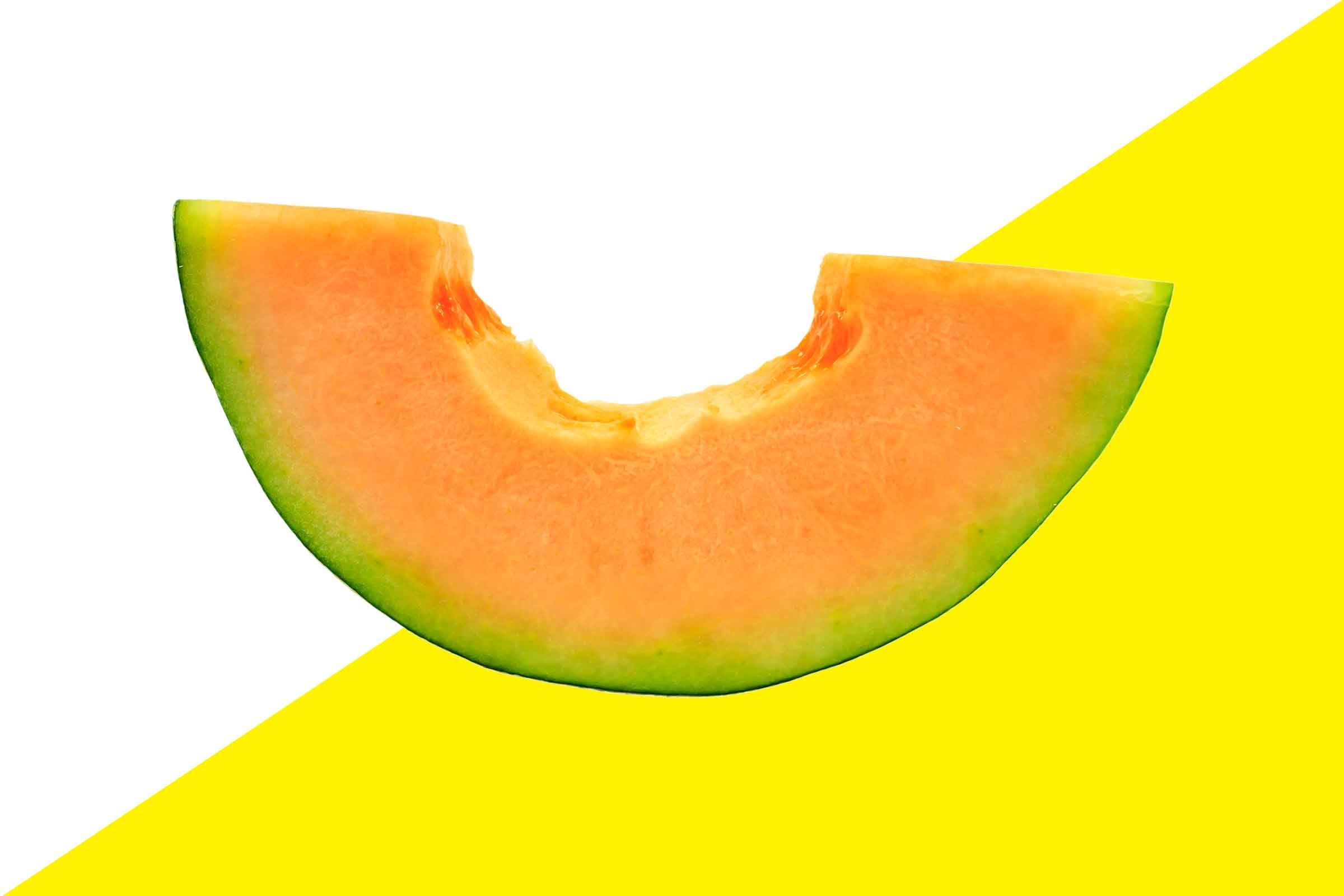
Melons
Even though you don’t eat the rind, you still need to wash off any bacteria lurking on the outside of your watermelon or cantaloupe before cutting into it. “Any time you’re going to cut through the rind and through the center, you contaminate every edible surface as it passes through,” Dr. Mills says. To prevent yourself from getting overeager and cutting right in when you’re ready to eat, she recommends washing your melon as soon as you’re home before storing it in the fridge.
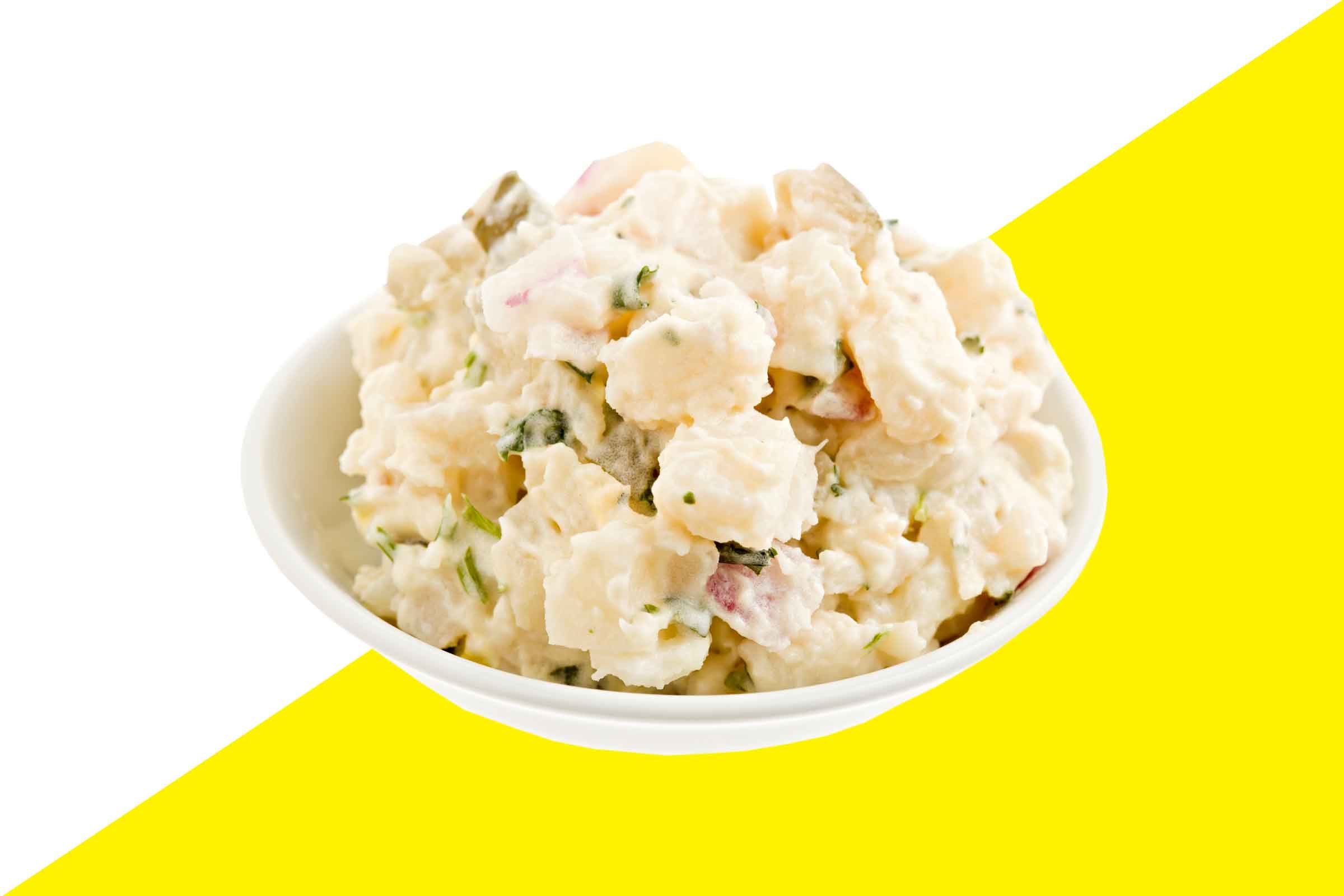
Potato salad
Any type of salad with a mix of ingredients, like potato, egg, or broccoli salad, shouldn’t be left out for more than two hours at a time, Dr. Mills says. “You don’t have to run around with a food thermometer, but just be cognizant of the time frames and keeping items chilled down,” she says. Leave them in the fridge or cooler until you’re ready to serve them, then let the salads sit on the buffet for an hour before putting them back in the fridge. But don’t leave them in the same deep serving bowl. Shallow containers let the food cool down faster, so transfer salads to a flat container before refrigerating, Dr. Mills says.
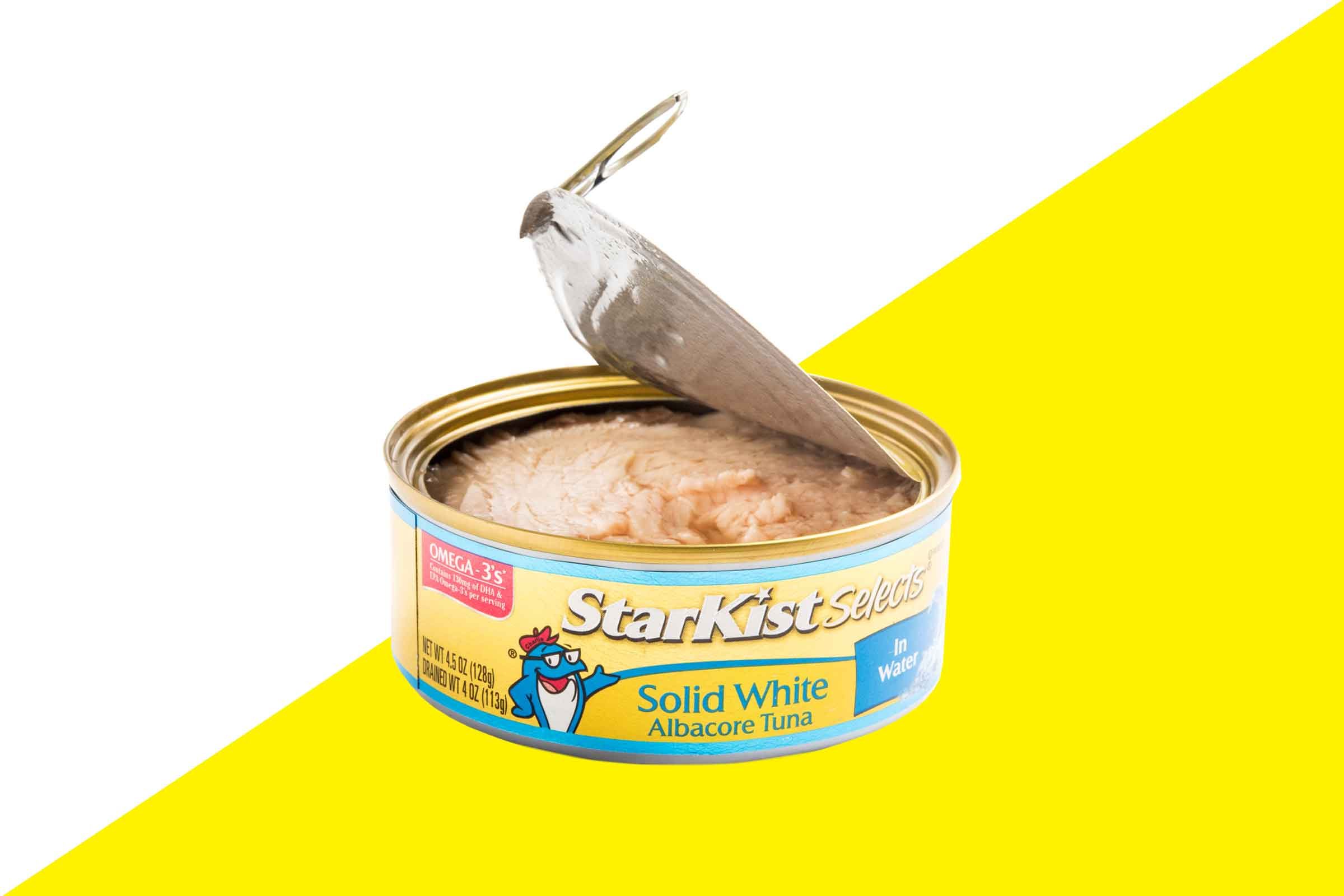
Tuna salad
When throwing a tuna salad together, you probably grab the can of tuna from the pantry, toss it with the rest of the ingredients, and head to your picnic. But because the can is starting at room temperature, your salad won’t be cold and you’ll already be headed for trouble, Nelken says. “Refrigerate all ingredients the night before, so when you make the salad in the morning they’re nice and cold,” he says. Better yet, make the entire dish ahead of time, and leave it in the fridge overnight so the flavors can blend.
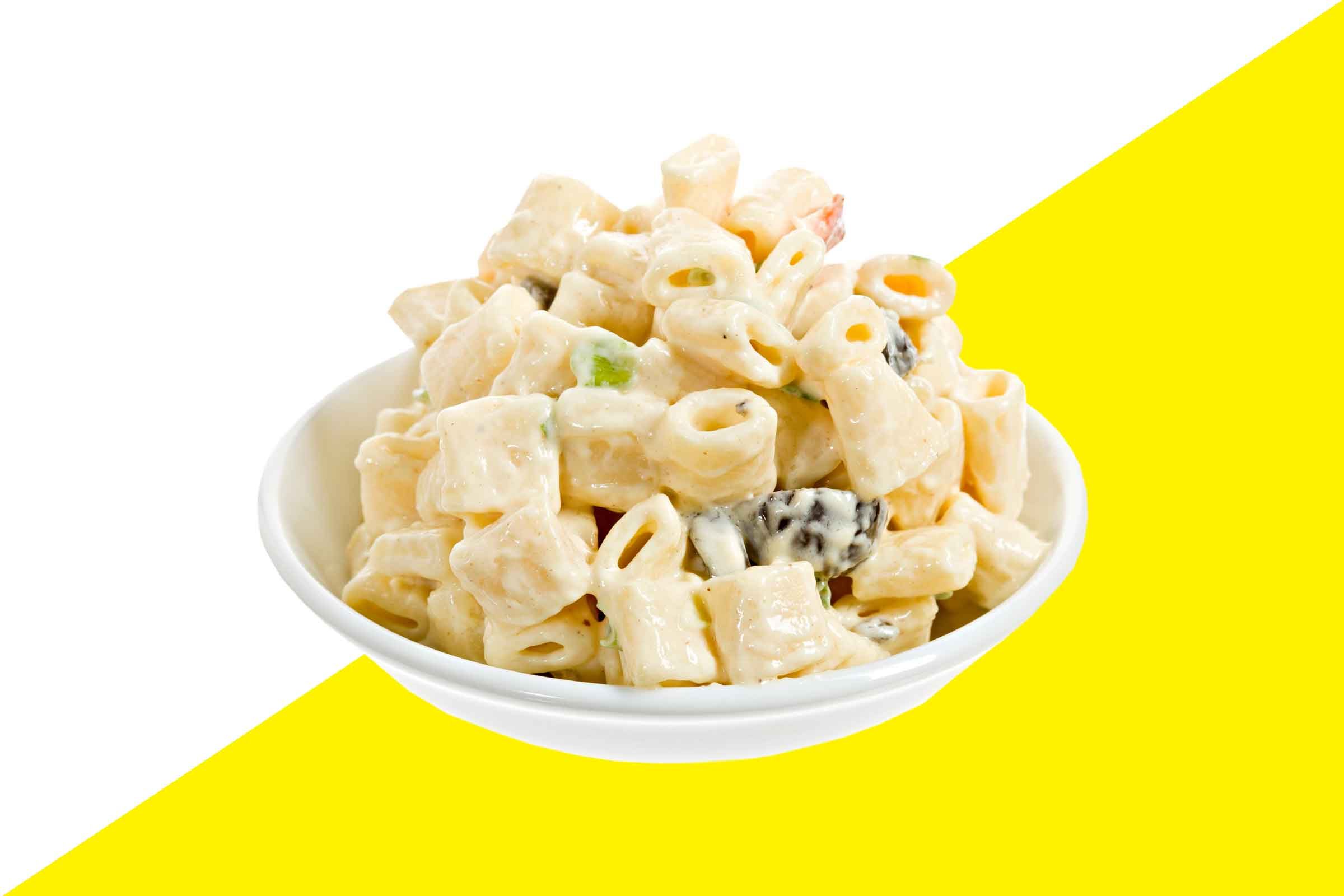
Macaroni salad
No matter how diligent you’ve been to keep your food chilled, the biggest germ-bearers might be other people’s hands. While people are reaching around and serving themselves macaroni salad, they might not pay attention to the finger they accidentally dip into the dish. If possible, have a glove-wearing volunteer dole out the food, Delbridge says. Otherwise, pick long-handled serving utensils. “The bigger the better because it keeps people from reaching with their hands and accidentally ending up in the actual bowl,” he says. Two-sided buffet lines should have two spoons so that people can reach the handle without getting a wrist in the food, he adds.
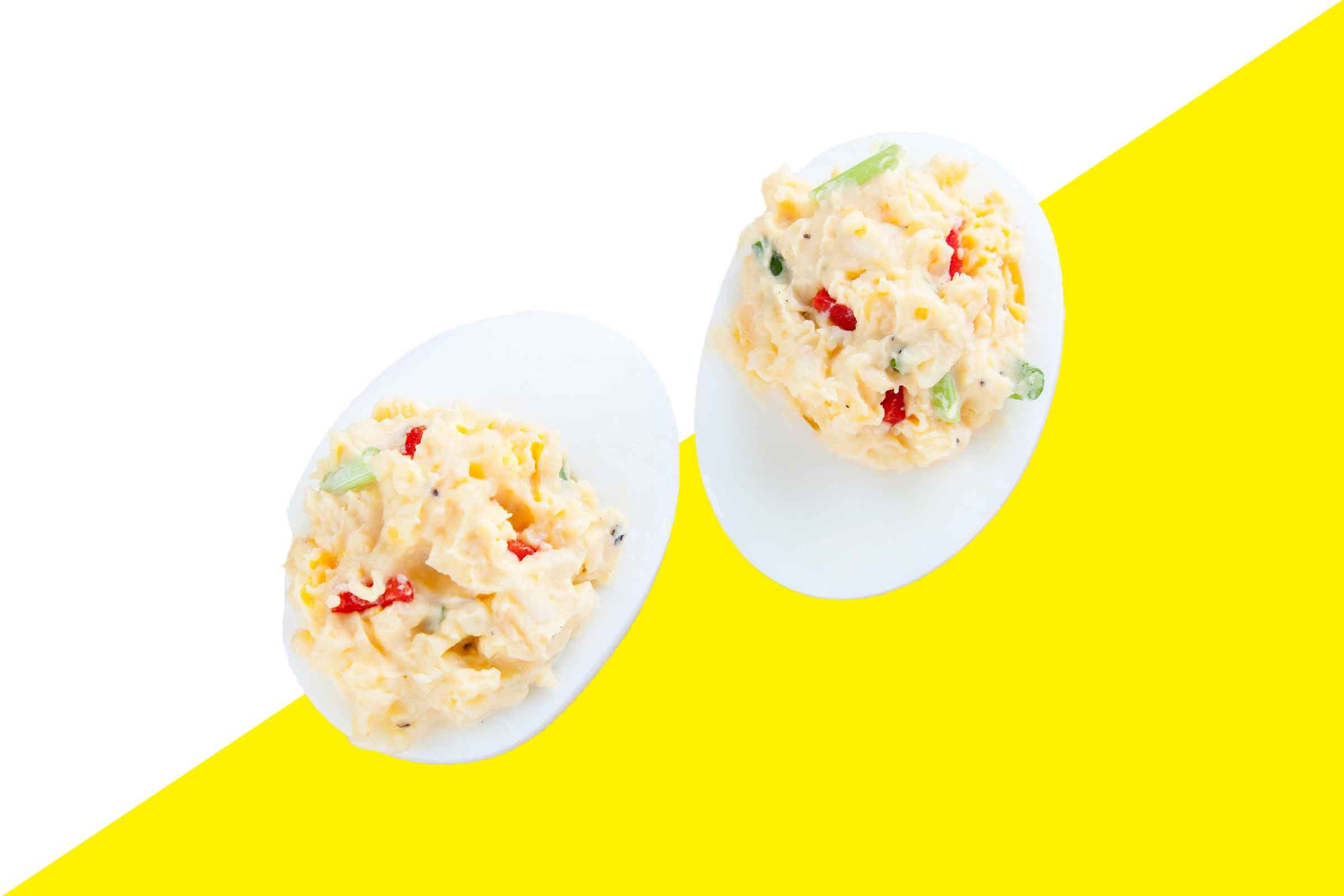
Deviled eggs
Pasteurization and processing get rid of most salmonella, so only about one in 10,000 eggs is contaminated with the bacteria. The problem is, deviled eggs are handled a lot while being made, meaning you could transfer bacteria from your fingers. After all, you hard boil the eggs, pull off the shells, slice them and scoop out the yolks, then grab the egg white again to put the insides back. “After the egg is cooked, you’ve touched it four different times with four different methods, so the chance of contamination is four times higher,” Delbridge says. You can’t (politely) guarantee another chef’s hands were clean, but if you’re the cook, wash your hands often to keep grubby fingers from spreading bacteria. Here’s how to make deviled eggs perfectly.
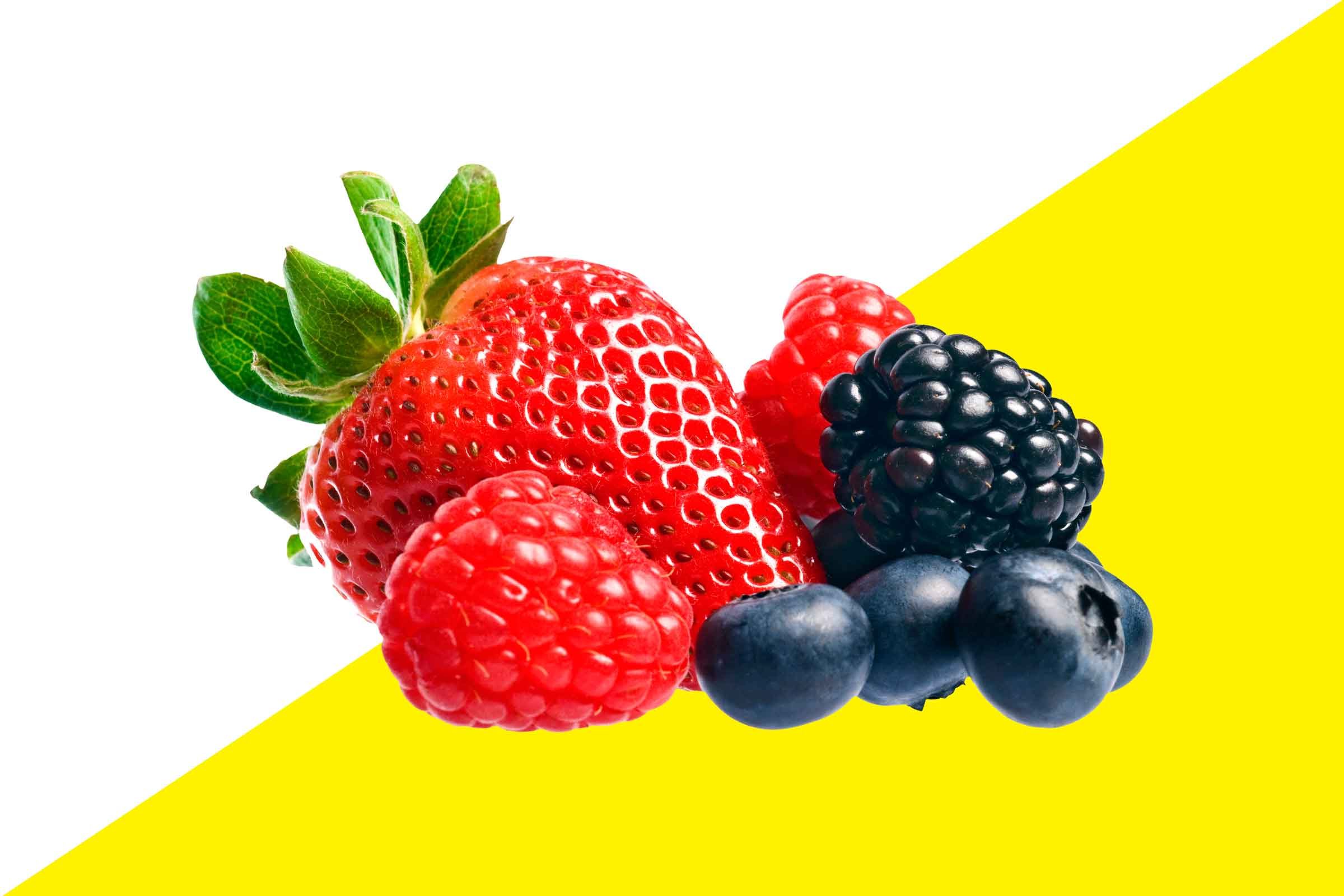
Berries
“Berries are so tempting because they’re bite-size and you want to grab one and taste it,” Dr. Mills says. “They’re often presented beautifully, so they look clean.” No matter how luscious they look, the outsides of berries can contain icky germs, she warns. Make sure to wash the fruits before popping one in your mouth.